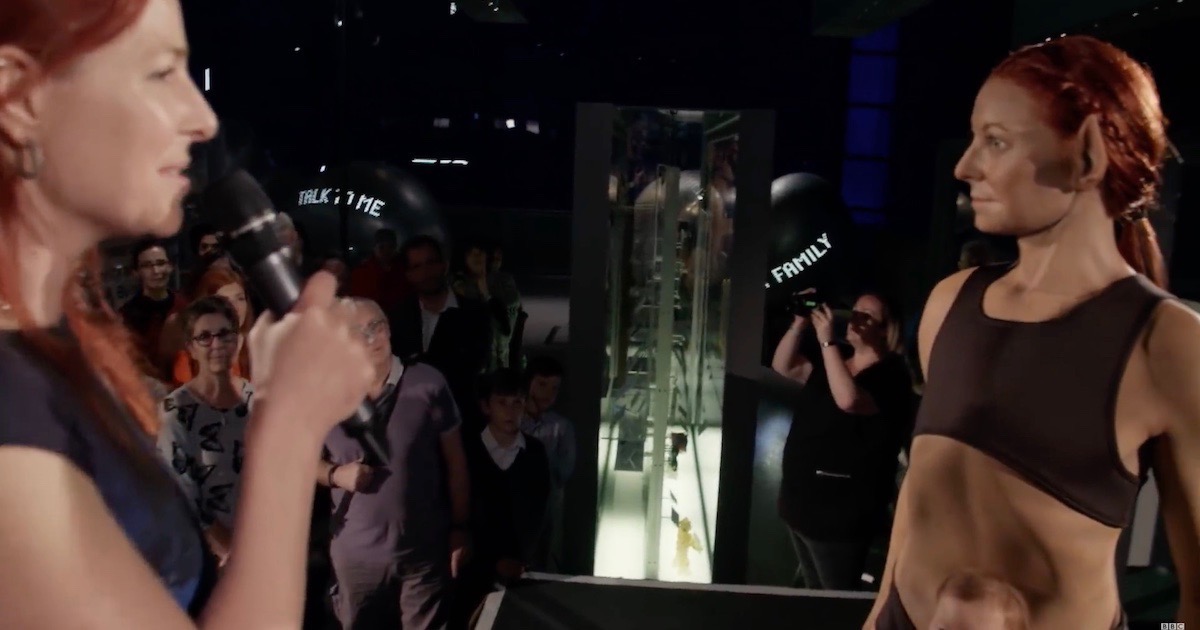 Evolution
Evolution
 Intelligent Design
Intelligent Design
Just Try Evolving That!


One of the tropes of evolutionary biologists is that our bodies are flawed. We saw this most recently from Nathan Lents, who published a book on the topic of our supposed bad design. Now, as Jonathan Wells reports, we have a refreshing new approach to the subject: what an ideal body would look like if it was designed by intelligent people rather than evolved by random mutation and selection. Oops! Did I say designed?
In this case, the design that Dr. Alice Roberts came up with is eclectic in the extreme. She suggests trading our eyes for octopus eyes, our legs for ostrich legs, our lungs for bird lungs, and our reproductive organs for a marsupial pouch.
I’d like to point out a few things. None of this is evolutionarily possible. The features she wants to coopt come from completely separate lineages — mollusk, bird, and marsupial — and these traits are specific to each particular lineage. Only birds have flow though lungs, mollusks are invertebrates with a completely different mode of development from ours, and marsupials are the only ones with pouches.
Biology and Compatibility
But neither is it possible by design. These features come associated with multiple other systems that need to work together, and that will not be compatible with human biology. Changing to ostrich legs would undoubtedly affect our hips, our spine, and our stability. We are not made to support such large drumsticks. Instead, we are built for versatility. We can run and walk, but we can also climb, which ostriches definitely can’t do. Can they swim? Judge for yourself. Here is a video in which people help rescue an ostrich from a swimming pool. It’s not clear to me how deep the pool was:
Ostriches take the prize for both speed and long distance running, but we don’t do too shabbily either. Among long distance runners in the animal kingdom, we are in the top six, along with horses, camels, pronghorn antelope, sled dogs pulling as a team, and, of course, ostriches.
Octopus eyes have a different retinal system and process images differently than we do. And our brain anatomies differ. How would octopus eyes interface with our brains? Our nerves are myelinated to increase nerve transmission speeds. An octopus’s nerves are not myelinated, and so transmit more slowly. How do they cope with the reduced speeds? They outsource, with nerve nets in their arms that appear to be capable of acting without input from the brain. That would be a little worrying in humans.
As for pouches, our infants are helpless when they are born at 9 months. If they had to be born and crawl to the pouch at a stage comparable to that of a marsupial, it would never happen. Gestation times to birth are incredibly short (12 days for an opossum!), and the time in the pouch can be just a few months:
Marsupials represent approximately 6% of all mammal species and include iconic pouched mammals of Australia such as the kangaroo, wombat and koala. Compared to eutherian mammals, which include more familiar animals such as the dog, cow and human, marsupials have ultra-short pregnancies and give birth to very immature, almost embryonic, young that complete most of their development attached to the teat, usually within a pouch. Kangaroos represent the largest extant marsupials and also give birth to the largest young. However, the newborn kangaroo still weighs less than one gram at birth and must climb blind and unaided from the birth canal to the pouch.
The joeys must have highly developed arms to make the journey to the pouch after birth, unassisted and blind. It’s a completely different mode of development. Our large brains are given the time and nourishment they need before birth, and they continue to grow for years after birth. No kangaroo does that. The joeys gestate for about a month, and then are kicked out of the pouch between 8 and 11 months later, depending on the species. Our infants have only just been born after 9 months of pregnancy.
A Confused Message
The article at Live Science was probably meant to be humorous, and it was. The picture of the “ideal” human woman is funny — a bug-eyed elf on spring-loaded legs with a built in baby bag. The elf ears I might keep. Lothlórien! But as for the rest, the take-home message is confused: We are the product of a messy half-baked process called evolution; we are obviously not the product of design. The message is that a designed human would have the best of all features combined, with no flaws. Here, says Dr. Roberts, let’s show you how it’s done.
But we do have the best of all features — for us, as we are. We need versatile strong, stable limbs for long distance travel. Our camera eyes are extremely sensitive, and communicate efficiently with our brains. And our mode of reproduction allows time for development of the brain in utero, even before birth. I say go with a winning strategy. Placental mammals have outcompeted marsupials just about everywhere, the one exception being the opossum.
But nobody wants to be an opossum…hmmm, what do you think? Maybe the nose?
Photo: Alice Roberts meets the Perfect Human Body, via BBC Four (screen shot).
